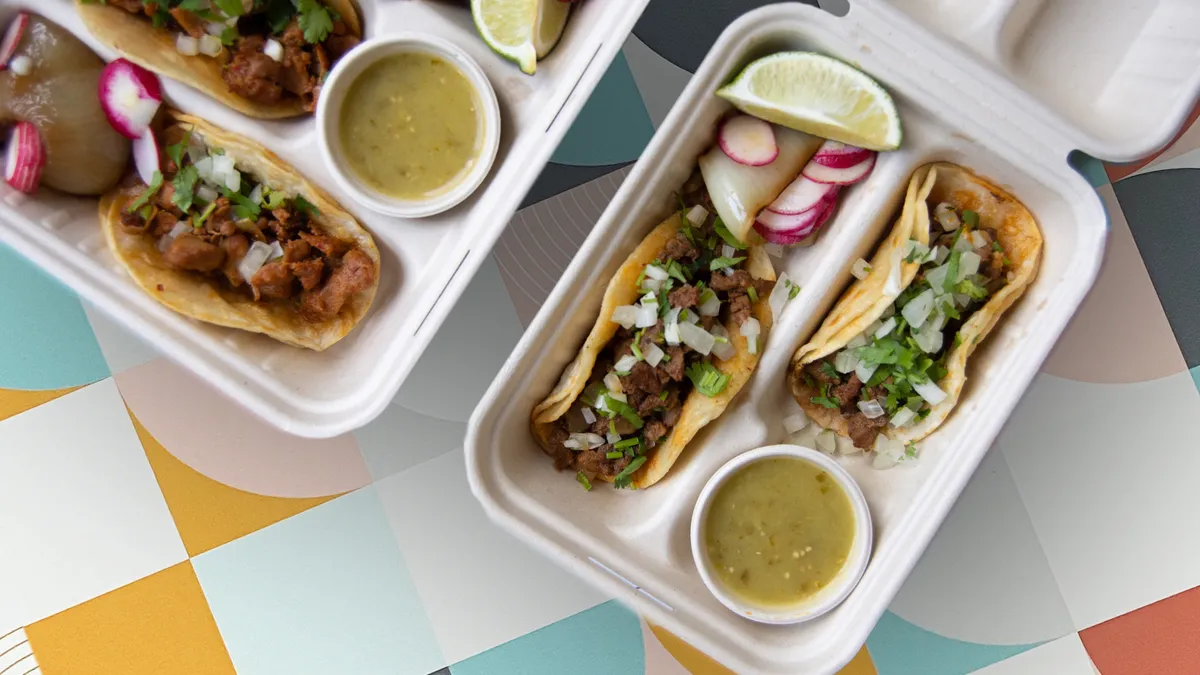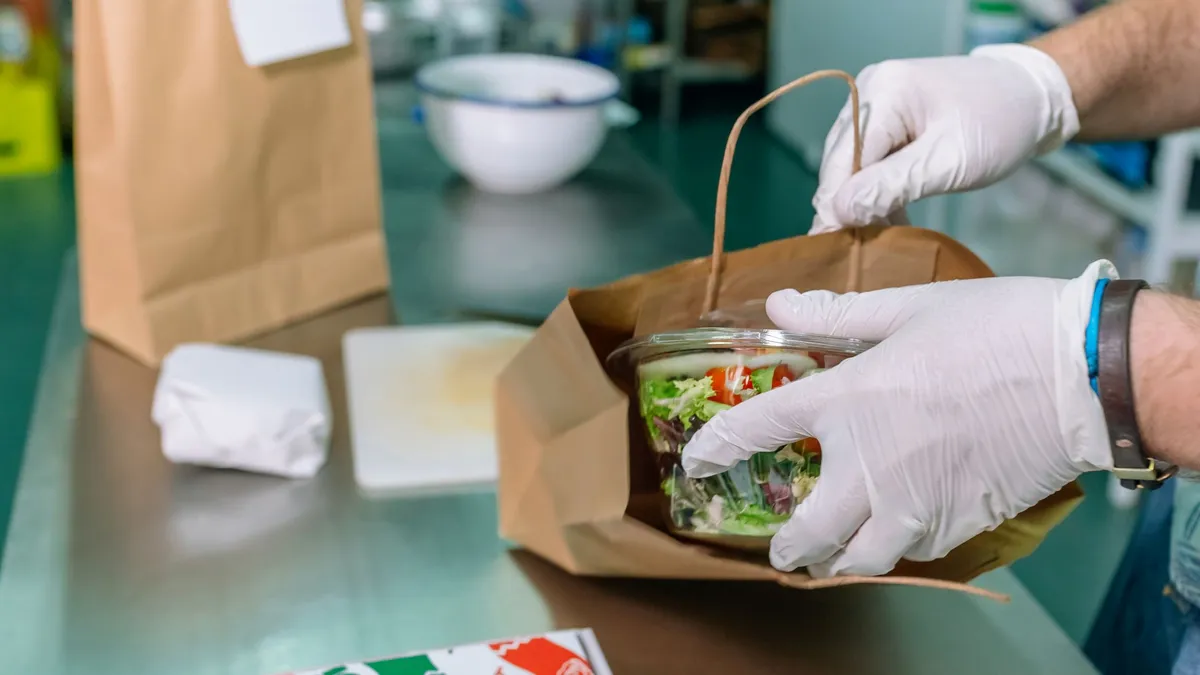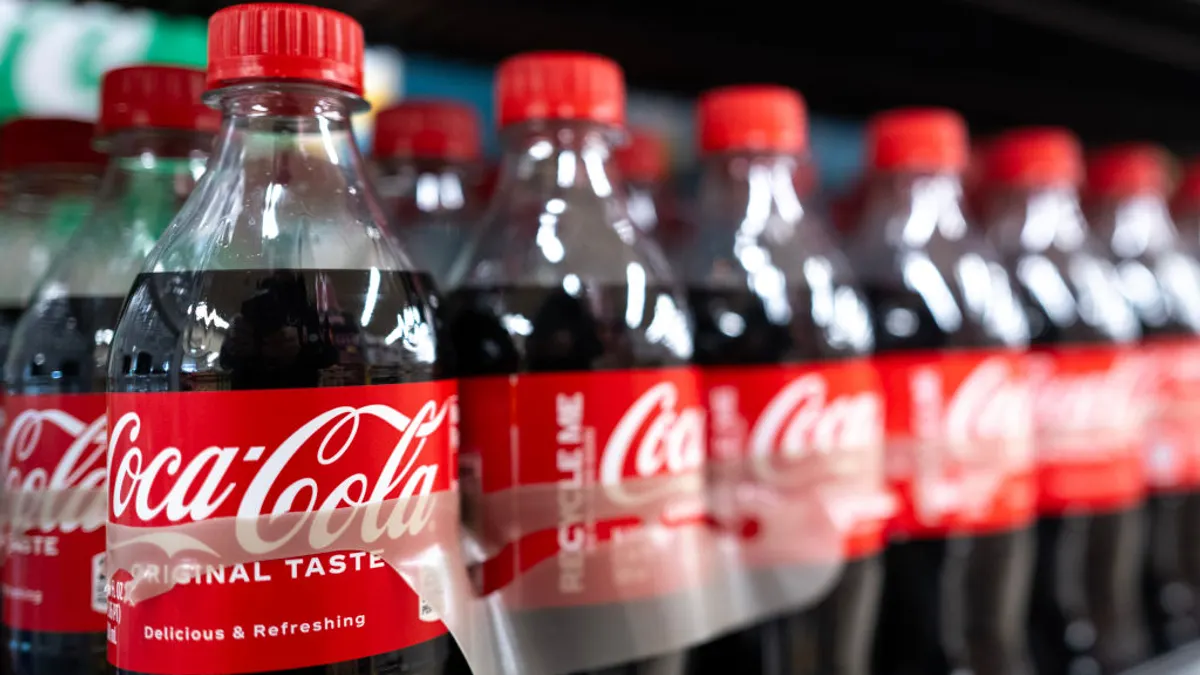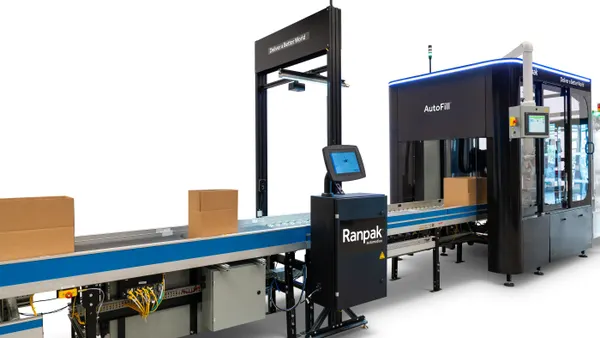Companies constantly innovate with technology and redesign their packaging to get better performance, improve marketability and enhance sustainability. Here’s a look at six of the recent redesigns and innovations on Packaging Dive’s radar.
Let’s taco ‘bout compostability
Compostable packaging company Better Earth recently introduced new clamshell containers specifically for tacos.
“North America is a massive hub for the consumption of tacos. According to Statista, in the U.S. alone, 4.5 billion tacos were eaten in 2019, a number that's been steadily climbing over the years,” Vice President of Marketing Mark Marinozzi said via email. “But along with the love for tacos, there's an elephant in the room that needs to be addressed: the vast amounts of packaging required [to get] tacos to consumers.”
Better Earth created two sizes of compostable clamshell containers made from bamboo fiber that have two or three slots that hold tacos upright to prevent tipping. The containers do not contain PFAS, wax or plastic linings and can break down in commercial composting facilities in two to four months, according to the company. Certification from the Biodegradable Products Institute is still pending.
This is Better Earth’s first foray into products specially made for one category instead of a variety of foods. However, the slotted clamshells also are suitable for other narrow items like hot dogs, cannoli and sushi.
Ice, ice baby

Smirnoff Ice, the self-proclaimed “OG malt beverage,” is kicking off its Relaunch Tour that will feature what it calls “music's most celebrated OGs — Shaggy and T-Pain.” The nationwide music and entertainment tour complements the brand’s recently announced packaging redesign, dubbed “a drippy new look” with “new swag vibes.”
"More than two decades ago, Smirnoff Ice made history as one of the first flavored malt beverages and has been challenging the status quo ever since," said Lisa Lee, Smirnoff Ice brand director, in a statement.
Pure redesign

Food and beverage producer Pure Protein, which was established in 1995, is undergoing its first rebrand in nearly three decades. The packaging makeover “includes an updated logo, a vibrant color palette, and a fresh typeface,” according to a news release. It will highlight characteristics that fans enjoy while modernizing to compete in increasingly competitive retail and online environments, according to the company.
Snack attack

ProAmpac unveiled patent-pending, easy-to-open flexible snack bags that are touted as durable and heat resistant. The Cincinnati-based company said in a news release that the easy-peel sealant technology is a “groundbreaking innovation” and offers consumers a hassle-free experience.
ProAmpac says the polyethylene-based film may be recyclable via in-store drop-off programs and is designed to replace laminated, non-recyclable materials used in conventional snack packaging.
It’s in the bag
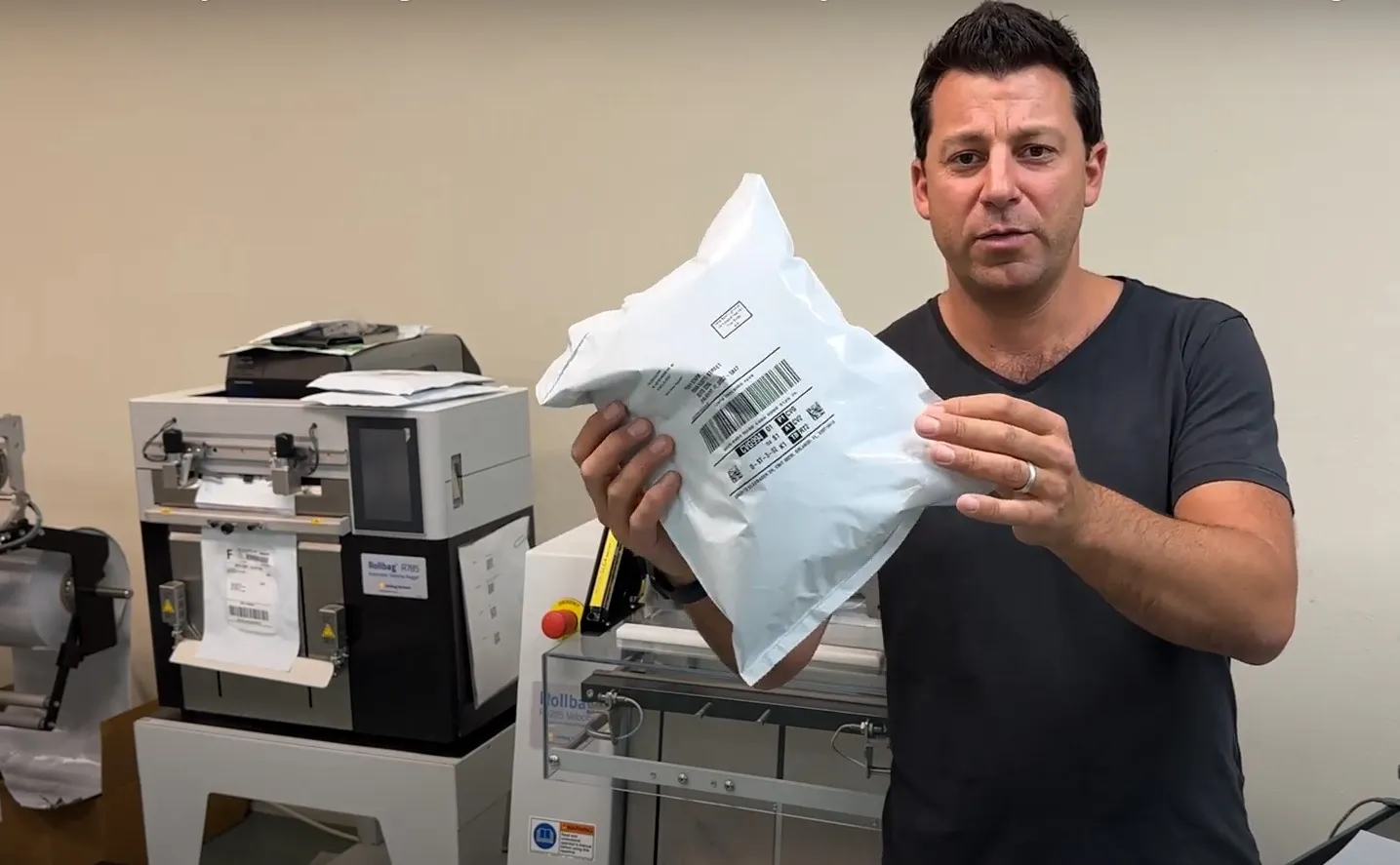
PAC Machinery Bags and Materials launched a polyethylene bag made from up to 100% recycled resin, which comes from three types of plastic waste: industrial, consumer and ocean-bound plastic.
“Developing environmentally-conscious products is a core value driving our company product development today and also one of the hottest topics in the packaging industry right now,” said General Manager Greg Quinn in a statement.
The product is designed for automatic bagging machines that use pre-opened bags, according to the Milwaukee-based company.
Getting “Smart”
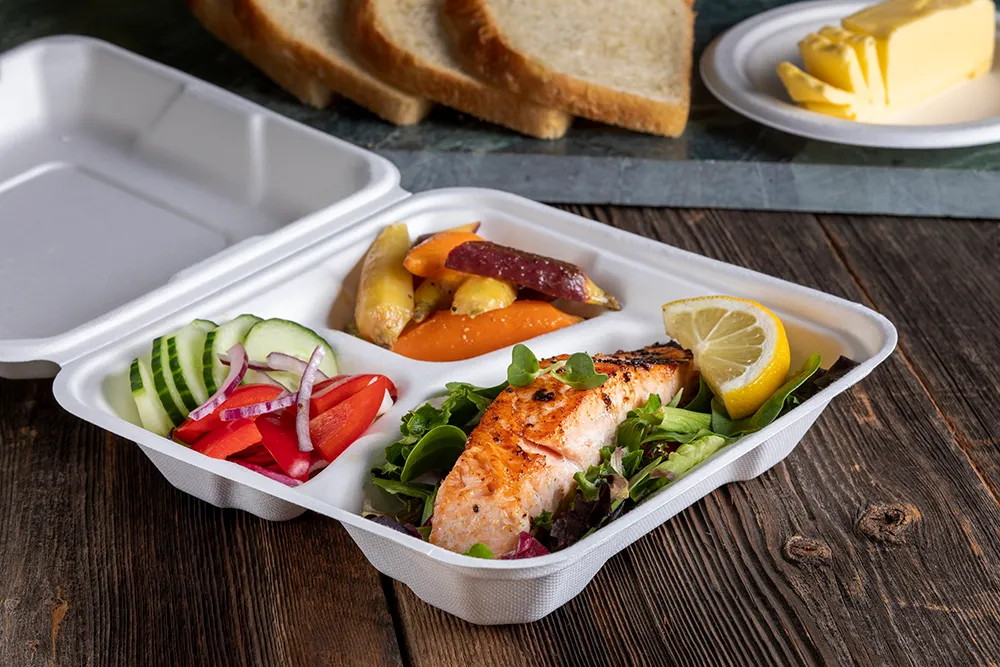
Illinois-based food packaging supplier D&W Fine Pack introduced its Earth Smart line, featuring products whose materials and production technologies “lessen environmental impact — throughout the product's life cycle,” according to a news release. This collection highlights the characteristics of recycled content, biobased content, compostability, recyclability, reduced environmental impact and lack of any “intentionally added” PFAS.
Five types of packaging are available in the Earth Smart line: bioresin rigid containers; bioresin straws; molded pulp containers, bowls and plates; mineral-filled polypropylene hinged containers; and postconsumer recycled PET containers.



